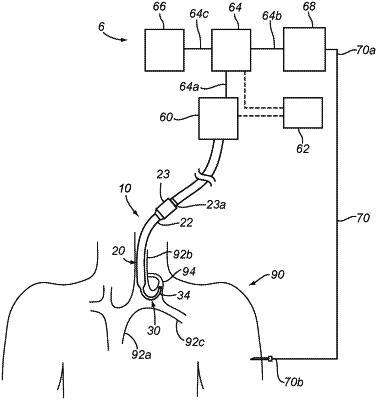| CPC A61M 1/3496 (2013.01) [A61B 5/414 (2013.01); A61B 5/4842 (2013.01); A61M 1/14 (2013.01); A61M 1/16 (2013.01); A61M 1/3659 (2014.02); A61M 1/367 (2013.01); A61B 5/01 (2013.01); A61B 5/14542 (2013.01); A61B 5/14546 (2013.01); A61B 5/6852 (2013.01); A61B 8/0841 (2013.01); A61B 8/488 (2013.01); A61B 2562/0247 (2013.01); A61M 2202/0405 (2013.01); A61M 2205/0216 (2013.01); A61M 2205/33 (2013.01); A61M 2205/50 (2013.01); A61M 2205/75 (2013.01)] | 20 Claims |

|
1. A method for treating a patient via a thoracic duct of a patient's body, comprising:
providing a tubular member comprising a proximal end, a distal end sized for introduction into the patient's body, and an expandable member on the distal end adjacent a distal tip of the tubular member;
introducing the distal end of the tubular member into vasculature of the patient's body via a percutaneous access site in a right internal jugular vein or right subclavian vein with the expandable member in a contracted condition;
advancing the tubular member until the distal end is disposed within a junction of the patient's left internal jugular vein and left subclavian vein;
manipulating the tubular member to direct the distal end into the thoracic duct;
expanding the expandable member to substantially isolate the thoracic duct from the left internal jugular vein and left subclavian vein;
removing lymphatic fluid from the thoracic duct through the tubular member to a location exterior to the patient's body;
treating the removed lymphatic fluid; and
returning at least a portion of the lymphatic fluid back into the patient's body.
|